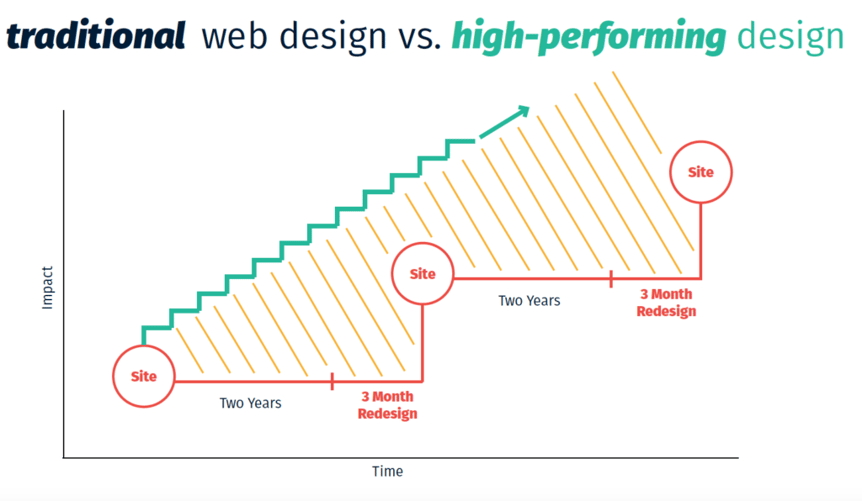Most private schools don’t have the budget for a full-time recruiter. That job gets shared by staff, board, and enthusiastic parents--often with mixed results. What most leaders don’t understand is that they already have a full-time recruiter who just isn't showing up for work.
The invisible employee.
Who is this invisible employee? You guessed it--it’s your website. Taking advantage of this critical resource requires a Growth Driven Design strategy; it requires something very different than the traditional approach to building and maintaining websites.
Websites as full-time recruiting tools are being under-utilized by most private schools. 82% of consumers research online before they make a purchase commitment. If that’s true for televisions and toasters, then think about the much bigger decision to enroll a child in private education. While we know that the enrollment decision is usually finalized after a visit to the school, the journey actually begins much earlier. And, it begins online.
What has changed is that consumers no longer want the sales person (the recruiter or admissions staff) to be the only one with knowledge about what’s offered. They want to answer their questions online, and they do it on a personal schedule that won’t likely fit with school hours. The website is the place where parents explore, consider, and inform themselves about the culture, advantages, costs, and opportunities offered by your school.
Growth Driven Design builds enrollment.
Just like you wouldn’t hire a recruiter who wasn’t capable of grasping and responding to parent needs and concerns, you should not have a website that is not set up to learn and respond to what parents actually want and need. Traditional website building is more like buying a billboard than it is to hiring a responsive recruiter, but a Growth Driven Design approach starts with a deep understanding of parent needs and goals along with real clarity about what makes your school unique. From this starting point, the process proceeds with a regular cycle of learning and adaption. In Growth Driven Design, changes are made regularly in response to how parents interact with the website.
Take the first Growth Driven Design step by building a buyer persona.
Just like a skilled recruiter who gets better after each parent interaction and presentation, your website should become more valuable and effective every month, rather than waiting the customary 2-3 years for a website refresh. For most schools, this kind of attention to their website is just not possible, given the many demands on staff time. Instead, the process for publishing a new website is actually a series of intentional steps, starting with the most valuable resources and then adding and adjusting for increased value on a regular schedule.
What’s needed is a change cycle that goes beyond just fresh content, but adjusts the structure, offerings, and look and feel of the website based upon real measurements and analysis. Growth Driven Design takes the best of “agile technology development” and makes it practical for private schools. What results is increasing value on the site for prospective parents, and they respond by taking those vital next steps of visiting and making online inquiries.

Measurable and consistent improvement.
When you use a Growth Driven Design to build enrollment, you can expect specific kinds of outcomes (the same kind of consistent progress you expect for students). Measurable achievements should be the norm instead of the exception, resulting in new momentum that fuels the growth of your school.
Here are some specifics that this approach delivers:
- Measurable results and concrete action - the official term for this is “Get Stuff Done”
- A scientific approach to implementing change based upon testable changes
- Month over month growth in web visitors, conversions, and enrollment
- Cost savings by focusing marketing funds on effective approaches
- Better use of admissions staff time
- Increased referral growth from parents and supporters because the online value is easy to share










